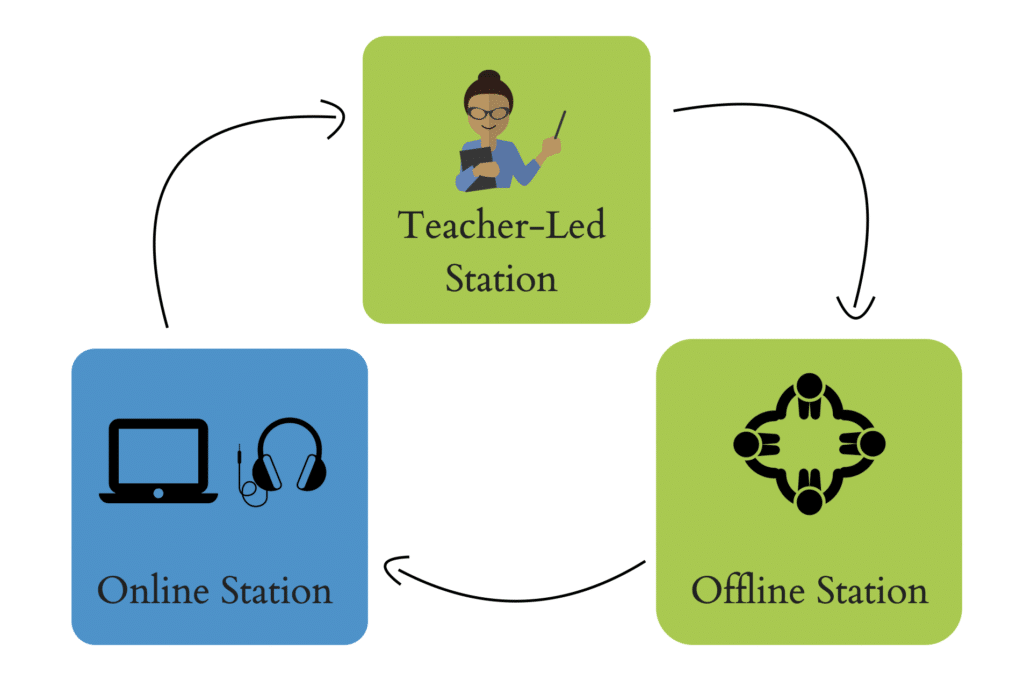There is no doubt that we will see greater disaparity in ability levels amongst the students in our classrooms given the time lost learning in a consistent, structured, and equitable educational environment over the past year.
Classes with Many Different Ability Levels
Thus, teachers can expect to have classrooms that consist of a wider variety of ability levels than ever before. While the typical, pre-pandemic 4th grade classroom might only have several students who require additional time and support with the curriuculm, our post-pandemic classrooms will have greater needs amongst a greater number of students. They will require more individualized support and intensive instruction to help make up for the learning they lost.
You may wonder how one teacher can possibly provide such personalized assistance to a class of 30 students? It can seem like a daunting, unattainable task for even the most seasoned teachers. However, having taught in multi-age and multi-grade inclusive classrooms for many years, I can assure you that there are several strategies for teaching students with such a vast array of needs! It can be done! So, here are my suggestions.....
10 Strategies for Teaching Different Ability Levels
1. Begin with the right mind-set. All the students in your class are YOUR students. That means it is ultimately your responsiblity to teach them. Yes, you can use the support of the special education teacher, paraprofessional, learning specialists and colleagues. However, your students should be spending most of the day with you, learning as much of the same material as their peers, and recieving their learning supports in your class as to the greatest extent possible.
2. Create a classroom that welcomes all your learners. Give students the message that they belong despite any challenges they face. Help your students adopt a growth-mindset and have regular discussions with them about individual strengths and areas for further development. Explain that everyone learns at different rates and in different ways, which will foster a greater understanding of variation in individual abilities. Teach them the power of adding the word,"yet" when they talk about something they can't do.
3. Know where your students are at academically and know where they can possibly to go. Establish your student's baseline performance and then plan to help them reach further and higher. Presume competence and set high expectations.
4. Look at the over-arching themes for the curriuclum you are working with. If possible, try to create a cross-curricular thematic unit in which students can be learning the same topic but at their developmentally appropriate level.
5. For each subject, think of your students who are:
- working at grade level
- who need support to work at grade level (they understand the material but need extra time with it or help accessing it)
- who are not yet working at grade level
- who work beyond grade level
b) Use multiple ways of having the students interact with material to help them learn such as teaching vocabularly, symbols, using graphic organizers, or provide guided practice
c) Provide multiple ways for students to express their learning such as using different tools (writing, art, presentation) or different activities related to the concept. Choice Boards or Menus are a popular way of giving students ways to express their individual strengths.

8. For subjects that require direct instruction and guided practice (such as ELA and Math) group students according to ability level. Have each group of students meet with you for a developmentally appropriate lesson. While you are providing instruction, assign the other groups relevant work that they can complete independently. For example, they can watch a video, complete word work, journal, read etc.
Tip: Before you implement learning stations, teach the students what is expected during the time that they are working independently. Teach them how to access materials, get help, transition, and what to do when they are finished. Here is a great resource for implementating stations in your classroom.

Source: Catlin Tucker
9. Ensure that your students know how to work independently. I cannot stress this enough!! Give explicit instruction on what is expected of them while you are working with other groups and then practice, practice, practice! For example, they should know:
- where to work
- how and when to access materials
- how to ask for help
- where to get help
- what to do with finished work
- what to do when finished work
- how to transition to the next task
- what to do if someone comes to the door or if there is a phone call
10. Try to start with a whole-class lesson as often as possible before breaking away for independent or group work. This creates a sense of community through shared experiences as well as giving all your students equal access the concepts you are teaching. Conversly, bring students back together at the end of a lesson for review or follow-up discussion.
DON'T TRY IT ALL AT ONCE AND ALL ALONE
Working in a classroom with multiple ability levels can be draining without the right preparation and supports. Collaborate with your colleagues, share resources, and enlist the help of learning specialists. Start with small and don't be afraid to re-try something if it doesn't work! You've got this :)




No comments:
Post a Comment